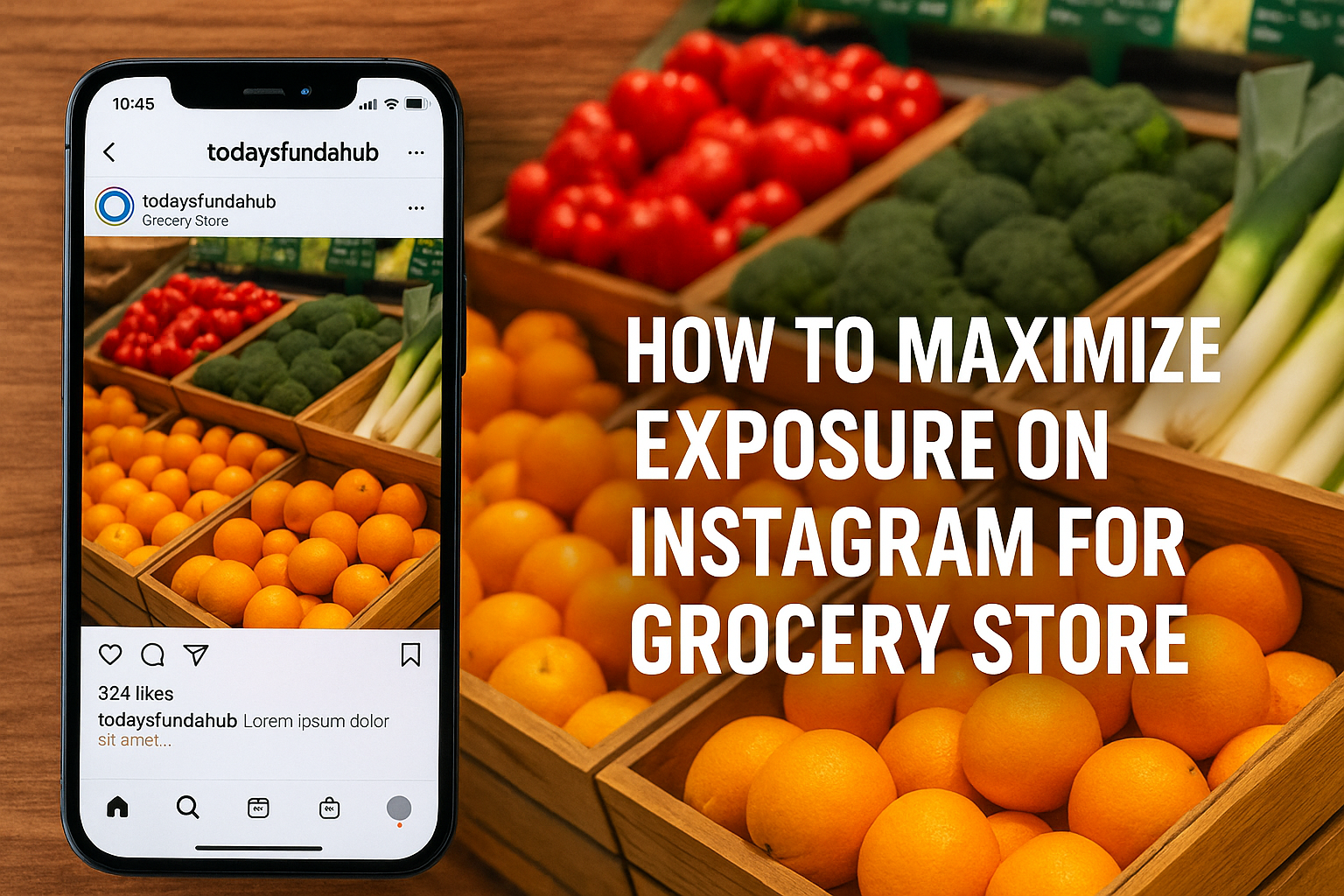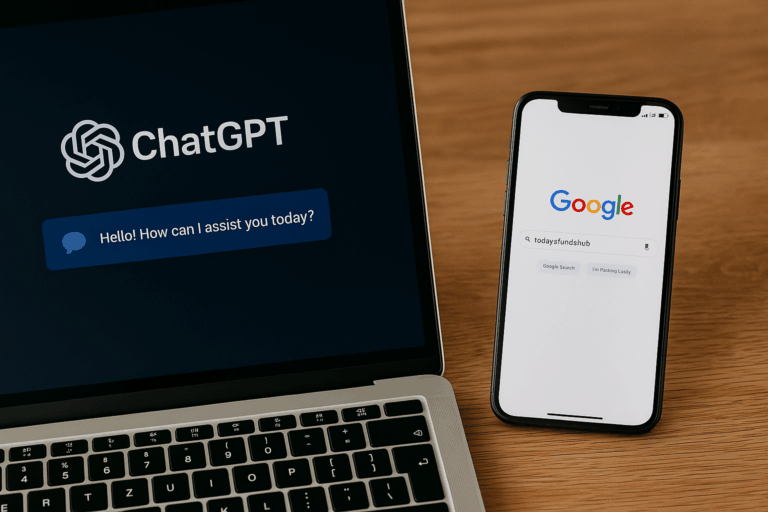Smart Tools for Smart Creators ✅
Instagram isn’t just for fashion brands and influencers anymore. Local businesses — including grocery stores — are finding that a strong Instagram presence can turn casual shoppers into loyal customers. With the right strategy, your grocery store’s Instagram account can build community, attract new buyers, highlight seasonal products, and even drive foot traffic directly to your store.
But here’s the challenge: the Instagram feed is crowded. It’s not enough to post random product photos. To stand out, your store needs a deliberate strategy that combines visual storytelling, customer engagement, and smart use of Instagram’s features.
This guide explains how to maximize exposure on Instagram for your grocery store — with step-by-step strategies, proven content ideas, and insider tips inspired by real influencers and small business owners who’ve already cracked the code.
Why Instagram Matters for Grocery Stores
- Visual-first platform: Perfect for showcasing fresh produce, colorful displays, recipes, and promotions.
- Local discovery: Instagram’s location tags and hashtags make it easier for nearby customers to find your store.
- Community building: Customers are more likely to shop from businesses they feel connected to.
- Impulse-driving: Instagram can nudge customers to try a new product, visit your store, or order via delivery partners.
Think of Instagram as a digital storefront — one that never closes and keeps attracting people 24/7.
Step 1: Optimize Your Grocery Store’s Instagram Profile
Your Instagram profile is your online business card. When customers land on it, they should instantly understand:
- Who you are
- Where you’re located
- Why they should follow you
Essentials for Your Profile
- Username & Handle: Keep it simple and recognizable. Example:
@GreenValleyGrocersinstead of@grocery1234. - Profile Picture: Use your store logo or a clean, well-lit exterior photo of your storefront.
- Bio: Short and direct. Example: “Your neighborhood grocery with fresh produce, local finds & weekly deals 🍎🥦 Open 8 AM–9 PM | 📍Downtown Main Street”
- Link in Bio: Point to your store website, delivery partner link, or a “link in bio” tool with multiple CTAs (e.g., Milkshake, Linktree, or Later’s link tool).
- Highlights: Create highlights for:
- Weekly Deals
- Recipes
- Store Updates
- Customer Favorites
Influencer Tip: Food bloggers often use emojis to make bios visually appealing and scannable. Use produce emojis (🍋🥬🍇) to reinforce freshness.
Step 2: Create Instagram Content That Pops
The biggest mistake most grocery stores make? Posting boring product photos. A single shot of apples on a shelf won’t stand out. Instead, think like a storyteller.
Content Formats That Work Best
- Carousel Posts
- Show “before and after” (fresh ingredients vs. final recipe).
- Highlight multiple products in one category (e.g., “5 Fresh Herbs to Try This Week”).
- Reels (Short Videos)
- Quick recipe tutorials (30–60 seconds).
- Behind-the-scenes at your store (unpacking deliveries, arranging produce).
- Fun challenges (staff making smoothies in 15 seconds).
- Stories
- Daily deals and time-limited offers.
- Polls: “Which fruit should be 20% off tomorrow? 🍓 vs 🍊”
- Customer shoutouts when they tag your store.
- Photos That Tell a Story
- Instead of a plain product photo, style it: A basket of peaches on a rustic table with natural light sells freshness better than a shelf shot.
- Show staff smiling while holding produce — builds trust and humanizes the brand.
Step 3: Post Consistently and at the Right Time
Instagram rewards consistency. Posting once in a while won’t build traction. But that doesn’t mean you need to flood the feed.
Suggested Posting Schedule
- Feed posts (Photos/Reels): 3–4 per week
- Stories: Daily (even simple behind-the-scenes content works)
- Reels: 1–2 per week
Best Times to Post (for Grocery Stores)
While each audience is different, grocery content tends to perform best:
- Morning (7–9 AM): People plan meals and grocery lists.
- Afternoon (12–2 PM): Lunchtime scrolling.
- Evening (7–9 PM): Relaxed browsing and planning next day’s shopping.
Pro Tip: Use Instagram Insights to see when your actual followers are most active and adjust accordingly.
Step 4: Use Hashtags and Location Tags Smartly
Instagram searchability depends heavily on hashtags and geotags.
Hashtags to Use
- Local hashtags:
#DelhiGroceries,#NYCFoodies,#FreshProduceBoston - Product hashtags:
#OrganicFruits,#FarmFreshVegetables - Community hashtags:
#SupportLocal,#ShopSmall
Tip: Mix big hashtags (millions of posts) with niche/local ones (few thousand).
Location Tags
Always tag your store’s location. This makes it easy for local shoppers to discover you. Even better: encourage customers to check in and tag your store when posting about their purchases.
Step 5: Partner With Local Influencers
This is one of the most powerful, underused strategies. Local micro-influencers (food bloggers, wellness coaches, mom bloggers) often have loyal, engaged audiences.
How to Collaborate
- Send them a free “weekly grocery basket” in exchange for a post or reel.
- Host an in-store event or tasting and invite them to document it.
- Co-create content: e.g., “@LocalFoodie shows us how she makes her favorite smoothie with our fresh spinach.”
Influencer Example: A local vegan influencer partnered with a neighborhood grocer to show how to meal-prep a week’s worth of plant-based lunches — both the store and influencer saw massive engagement.
Step 6: Run Instagram Promotions the Smart Way
Paid promotions on Instagram can massively increase exposure when done right.
Best Approaches for Grocery Stores
- Boost Local Awareness: Run ads targeting people within 5–10 km of your store.
- Promote Deals: Highlight weekly discounts in Reels or carousel ads.
- Target Families & Foodies: Use Meta Ads Manager to target specific demographics (parents, healthy eaters, vegans).
Pro Tip: Don’t boost random posts. Design promotions specifically for ads (bright visuals, clear offer, location mentioned).
Step 7: Build Engagement and Community
Instagram favors accounts that spark conversations. Don’t just post — engage.
Engagement Tactics
- Reply to every comment (even a simple “Thank you!”).
- Use interactive stickers in Stories (polls, quizzes, questions).
- Feature “customer of the week” — repost their grocery haul and tag them.
- Share seasonal recipes and ask followers to try and tag you.
Influencer Hack: Many food influencers end posts with a call-to-action question like, “What’s your go-to comfort food on a rainy day?” — try this to boost comments.
Step 8: Showcase What Makes Your Grocery Store Unique
Customers don’t just want to see what you sell — they want to know what makes you different.
Ideas to highlight:
- Local sourcing: Show the farmers or suppliers you partner with.
- Specialty sections: Organic, gluten-free, vegan, or international foods.
- Behind the counter: Stories of your staff, your store’s history, or quirky in-store traditions.
Example: A small-town grocer gained popularity by posting short videos introducing their staff (“Meet Ravi, who’s been arranging our fruit section for 15 years!”). This humanized the brand and boosted community loyalty.
Step 9: Track, Measure, and Adjust
Instagram isn’t static. What works today might need tweaking tomorrow.
Key Metrics to Watch
- Engagement rate: Likes, comments, shares, saves.
- Reach: How many unique accounts see your posts.
- Profile visits & clicks: Are people checking your bio link?
- Conversions: If you run ads, track how many visits → actual foot traffic or online orders.
Tip: Use free tools like Instagram Insights or go advanced with third-party analytics tools like Later, Buffer, or Metricool.
Step 10: Extra Tips & Tricks from Real Influencers
These are tactics borrowed directly from food bloggers and store owners who’ve grown Instagram successfully:
- Batch shoot content: Dedicate one morning to photograph a week’s worth of products and recipes. Saves time.
- User-generated content: Encourage customers to share photos of their grocery hauls and repost them (with credit).
- Show recipes, not just products: People follow accounts that help them use what they buy.
- Create seasonal campaigns: Pumpkin recipes in October, mango specials in summer.
- Don’t be too polished: Influencers often say “authentic > perfect.” A quick, real video of unpacking fresh produce often performs better than a studio-perfect shot.
Wrapping Up Naturally
Instagram isn’t about selling hard — it’s about storytelling, consistency, and community. A grocery store that uses Instagram well becomes more than a shop; it becomes part of people’s daily lives. By optimizing your profile, posting engaging content, leveraging Reels and Stories, collaborating with local influencers, and engaging authentically, you can maximize exposure and turn followers into customers.
Remember: you don’t need a huge budget. You just need creativity, consistency, and a focus on making your grocery store feel alive on Instagram.
Smart Ideas, Straight to You
Subscribe for free updates — posts, tools, and strategies to help you create smarter and grow faster.


